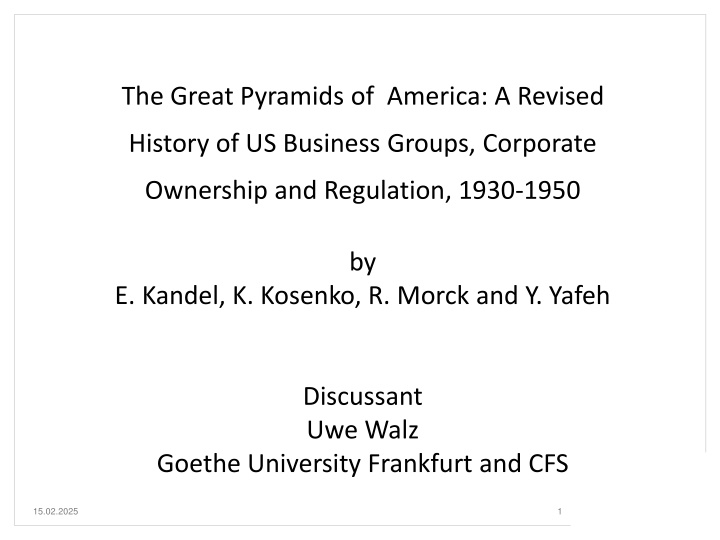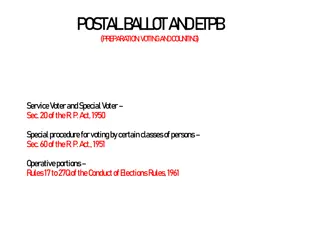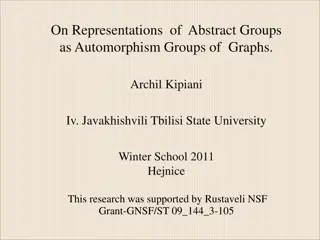Revised History of US Business Groups, 1930-1950
This detailed paper examines the phenomenon of pyramidal business groups in America from 1930 to 1950, focusing on the control and regulation of corporate ownership. It delves into the types of business groups, their demise, and the impact of regulatory reforms during that period.
Download Presentation

Please find below an Image/Link to download the presentation.
The content on the website is provided AS IS for your information and personal use only. It may not be sold, licensed, or shared on other websites without obtaining consent from the author.If you encounter any issues during the download, it is possible that the publisher has removed the file from their server.
You are allowed to download the files provided on this website for personal or commercial use, subject to the condition that they are used lawfully. All files are the property of their respective owners.
The content on the website is provided AS IS for your information and personal use only. It may not be sold, licensed, or shared on other websites without obtaining consent from the author.
E N D
Presentation Transcript
The Great Pyramids of America: A Revised History of US Business Groups, Corporate Ownership and Regulation, 1930-1950 by E. Kandel, K. Kosenko, R. Morck and Y. Yafeh Discussant Uwe Walz Goethe University Frankfurt and CFS 15.02.2025 1
Overview New data set on business groups in the US in 1930-1950 period Broad view on the phenomenon of business groups beyond narrow focus in the public utility industry Exceptional situation in the US in this time period Pyramidal business groups (in this paper): Cluster of firms with three or more public (traded) companies controlled by the same ultimate owner Starting point: largest 200 non-financial corporations reported in Berle and Means (1932) 15.02.2025 2
Overview Different types of business groups Ultimate owner controlled by family: family- controlled group Widely-held ultimate owner (apex firm): widely- held group Focus on demise of these business groups in this period To which extent did it take place? What are the reasons behind this breakup? Is there one particular reform which is responsible for this? 15.02.2025 3
Main results Exceptional features of US experience in 1930-50 period: i. Apex-firm in many groups is widely-held rather than held by families ii. Many groups were highly focused on particular industries, especially in public utilities and transportation (comprising 80% of all affiliates) iii. Rather short period of time (roughly twenty years); rather dynamic setting iv. Small wedge between ownership and control 15.02.2025 4
Main results Impact of regulatory and legal intiatives on demise of pyramids Public Utilities Holding Companies Act 1935 Only affects the groups with public utilities Rather unclear evidence Security Act and Exchange Act 1933/1934 Stronger shareholder rights Indirect evidence: pyramids which are family-controlled and have higher control-cashflow wedges disappeared more often 15.02.2025 5
Main results Double Taxation of Intercorporate Dividends Very substantial increase in tax rate Exemption with equity stakes of >85% Seems to have had some effect Investment Company Act 1940 Imposition of regulation on investment companies Railroads and public utilities are exempted as well as equity stakes >50% Controlling shareholders become passive investors Overall: no single regulatory change is responsible for breakup of pyramids in the 1940s 15.02.2025 6
Comments (1) Going one step back: What are the economic reasons for the pyramids to exist? How where they formed? Should give further hints on their dissolution Allows also to look into other factors Potentially new light on impact of regulatory reforms Also with respect to the welfare implications 15.02.2025 7
Comments (2) Conventional argument: pyramids are formed to allow families to achieve control of a firm using only a small cash flow stake Does not seem to hold/explain very much Average common equity stake held by insiders was high, in the order of 70%. This also holds true for family-held groups Also would not explain the large portion of widely-held pyramids 15.02.2025 8
Comments (3) Alternative reasons for the existence of pyramids: 1) Way to fund new investment in the presence of weak investor rights (Almeida/Wolfenzon (2006)) Would explain the high stakes/low control wedges Focus on dynamic segments of the economy at the time: public utilities There seems to be quite some dynamic evolution in the groups/affiliates (see e.g. Table 3) Dynamics of listed firms: investment when firm was already public? 15.02.2025 9
Comments (4) 2) Closed-end fund story specialized in one industry / Private equity with case-by-case additional investors in the affiliates Consistent with the existence of widely-held funds The existence of widely-held groups is one of the most interesting features/puzzle in the data Do we know anything about the type of investors in the apex firm of the widely-held firm? Are they long-term investors; how big are their stakes? 15.02.2025 10
Comments (5) Argument in the paper: business groups are different to conglomerates in >1960s (both following merger waves) Main difference: business groups having controlling stakes in listed firms whereas conglomerates do not But since business groups seem to have high equity stakes in listed companies: Why are these firms listed at all? Is that just a temporary phenomen: where they eventually taken private? Is there information resolving this puzzle? 15.02.2025 11
Some suggestions Some of the tables/figures are difficult to understand: further explanation would help Details about public affiliates would be very helpful (size, age, date of first listing etc) Ratio of inter-corporate dividends fall back in the 1940s to 1926-levels but are still at a sizable level (not negligible ..) Increasing number of business groups in the 1920s a consequence of sample selection in the data set (200 largest firms 1930)? 15.02.2025 12























